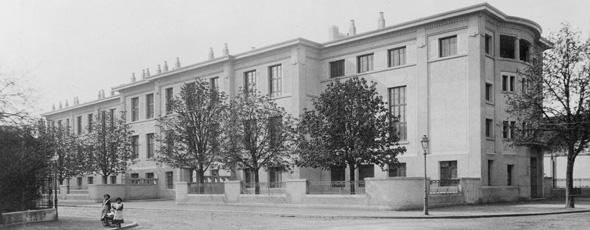The Institute of Chemistry
Between 1908 and 1910, a comprehensive chemistry building was constructed at Spitalstrasse 51 (on the site of a former gymnasium), housing two independent institutes for inorganic and organic chemistry.
Given the significant role of the chemical industry in Basel, it was particularly problematic that the rooms and facilities that had been offered by the Vesalianum for a quarter of a century were increasingly unable to meet the needs of a modern research department.
Contemporary reports noted with satisfaction that “all facilities have proven to be excellent, and according to the unanimous testimony of colleagues from Switzerland and abroad, the Basel Institute leads in terms of functionality.” During the celebration of the 450th anniversary of the university, this new “home” for the Department of Chemistry drew high praise. Even later, in 1930, it was said that the institutions were “equipped with all modern facilities,” which included a combustion room with six furnaces and a fireproof night room equipped for continuous work with motors for stirring and shaking.
The facilities for the chemical sciences continued to evolve in the new institution, and notably, the number of students increased. In 1910, the year the institute was opened, 77 students were trained in inorganic and organic chemistry, and by 1947, the number had risen to 294. Shortly after 1910, complaints could again be heard that space was lacking.
In 1926, the Institute of Physical Chemistry moved next door to the new building constructed for the Institute of Physics, and in 1952, the Institute of Organic Chemistry was able to move into a new building just around the corner at St. Johanns-Ring 19. The old Institute of Chemistry was renovated and dedicated solely to inorganic chemistry, leaving the entire building complex between St. Johanns Ring, Pestalozzi, and Spitalstrasse set up for the chemical and physical sciences.



